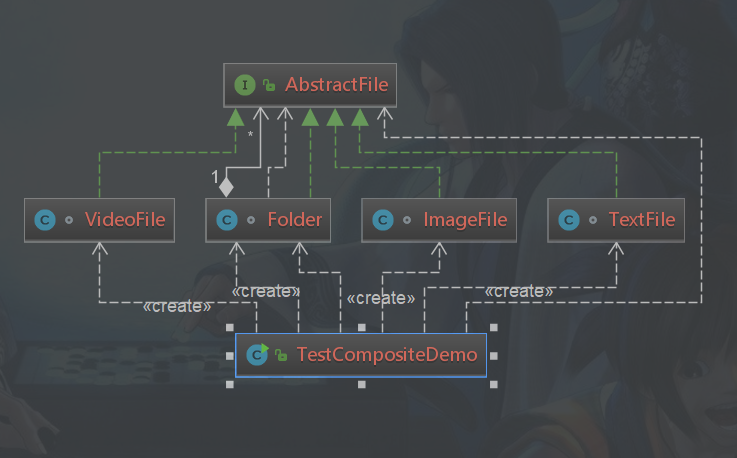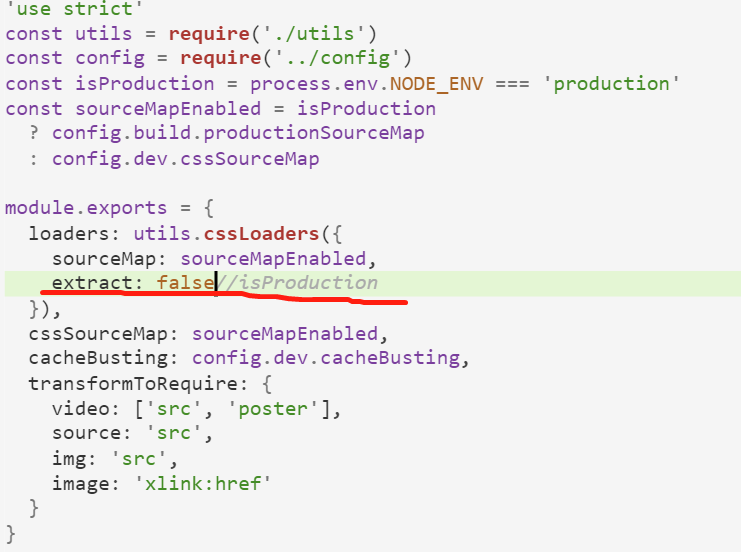leetcode解题思路分析(四十九)420 - 426 题
- 强密码校验器
一个强密码应满足以下所有条件:由至少6个,至多20个字符组成。至少包含一个小写字母,一个大写字母,和一个数字。同一字符不能连续出现三次 (比如 “…aaa…” 是不允许的, 但是 “…aa…a…” 是可以的)。编写函数 strongPasswordChecker(s),s 代表输入字符串,如果 s 已经符合强密码条件,则返回0;否则返回要将 s 修改为满足强密码条件的字符串所需要进行修改的最小步数。插入、删除、替换任一字符都算作一次修改。
本题难点在于分阶段讨论,其中连续的字符可以通过插入/替换的方式轻松解决,对于超过20个字符的,则需要考虑如何删除才能最轻松的满足条件
class Solution {public:int strongPasswordChecker(string s) {int lower = 1, upper = 1, number = 1;int once = 0, twice = 0, replace = 0;for (size_t k = 0; k < s.size(); k++) {if (islower(s[k])) lower = 0;if (isupper(s[k])) upper = 0;if (isdigit(s[k])) number = 0;int num = -1;if (0 < k && k < s.size() - 1) {if (s[k - 1] == s[k] && s[k] == s[k + 1]) {num = 3;while (k + 2 < s.size() && s[k + 1] == s[k + 2]) {num++;k++;}k++;}}if (num > 0) {if (num % 3 == 0) once++;if (num % 3 == 1) twice++;replace += num / 3;}}int miss = lower + upper + number;if (s.size() < 6) return max(6 - (int)s.size(), miss);if (s.size() <= 20) return max(replace, miss);int del = s.size() - 20;replace -= min(del, once);if (del > once) {replace -= min((del - once) / 2, twice);}if (del - once - 2 * twice > 0) {replace -= (del - once - 2 * twice) / 3;}return del + max(replace, miss);}};
- 数组中两个数的最大异或值
给定一个非空数组,数组中元素为 a0, a1, a2, … , an-1,其中 0 ≤ ai < 231 。找到 ai 和aj 最大的异或 (XOR) 运算结果,其中0 ≤ i, j < n 。
采用Trie树来存取,距离最远的分支即为所求解
class Trie{public:Trie* next[2];Trie(){memset(next, 0, sizeof(next));}};class Solution {Trie* root = new Trie();public:int findMaximumXOR(vector<int>& nums) {// 将数按照二进制形式全部存入字典树里面for(int num : nums){Trie* node = root;for(int i = 30; i >= 0; i--){int bt = num >> i & 1;if(node->next[bt] == nullptr){node->next[bt] = new Trie();}node = node->next[bt];}}// 找最大值int res = 0;for(int num : nums){Trie* node = root;int sum = 0;for(int i = 30; i >= 0; i--){int bt = num >> i & 1;// 如果bt==1则贪心的去找0异或 否则找1异或if(bt == 1){sum += node->next[0] != nullptr ? 1 << i : 0 ;node = node->next[0] != nullptr ? node->next[0] : node->next[1];}else{sum += node->next[1] != nullptr ? 1 << i : 0 ;node = node->next[1] != nullptr ? node->next[1] : node->next[0];}}res = max(res, sum);}return res;}};
- 从英文中重建数字
给定一个非空字符串,其中包含字母顺序打乱的英文单词表示的数字0-9。按升序输出原始的数字。
因为题意保证输入合法,所以我们只需要检测每个数字的英文独有的字母即可。对于重复的,则用独有的去减即可
class Solution {public:map<string, int> M = {{ "one", 1},{ "two", 2},{ "three", 3},{ "four", 4},{ "five", 5},{ "six", 6},{ "seven", 7},{ "eight", 8},{ "nine", 9},{ "zero", 0}};string originalDigits(string s) {map<char, int> m;for (auto c : s) ++m[c];map<int, int> num;num[0] = m['z'];num[2] = m['w'];num[4] = m['u'];num[6] = m['x'];num[8] = m['g'];num[1] = m['o'] - num[0] - num[2] - num[4];num[3] = m['r'] - num[0] - num[4];num[5] = m['f'] - num[4];num[7] = m['s'] - num[6];num[9] = m['i'] - num[5] - num[6] - num[8];string res;for (auto& p : num) {res.insert(res.end(), p.second, p.first + '0');}return res;}};
- 替换后的最长重复字符
给你一个仅由大写英文字母组成的字符串,你可以将任意位置上的字符替换成另外的字符,总共可最多替换 k 次。在执行上述操作后,找到包含重复字母的最长子串的长度。
本题是一个典型的滑动窗口问题,右指针移动,然后判断当前窗口内最多的重复字符数是否加上k以内的值可以小于窗口总大小,不行则移动左边指针使得满足条件,最终得到的最大窗口大小即为最长重复字符子串长
class Solution {public:int characterReplacement(string s, int k) {vector<int> counts(26, 0); //记录当前窗口字母出现的个数int left = 0, res = 0, maxCnt = 0; // maxCnt记录字符出现次数最多那个字符 的次数for(int i = 0; i < s.size(); i++){counts[s[i] - 'A']++;maxCnt = max(maxCnt, counts[s[i] - 'A']); // 比较之前记录的最大数 和 当前字符的数量while(i - left + 1 - maxCnt > k){ // 若当前窗口大小 减去 窗口中最多相同字符的个数 大于 k 时counts[s[left]-'A']--; // 将窗口最左边的字符 在计数数组中减1left++; // 滑动窗口}res = max(res, i - left + 1);}return res;}};
- 建立四叉树
给你一个 n * n 矩阵 grid ,矩阵由若干 0 和 1 组成。请你用四叉树表示该矩阵 grid 。你需要返回能表示矩阵的四叉树的根结点。
核心思路:当前矩阵由三个参数确定:左上角元素的行号 row 列号 col,以及矩阵规模 N。判断当前矩阵是否为叶子节点,方法为比较左上角元素和其他元素的关系,若出现不等则为非叶节点,需要继续划分,每个划分后的矩阵规模为 N/2 * N/2,这 4 个矩阵递归地生成当前节点的 4 个子节点。若元素全相等则返回一个叶子节点 (true, grid[row][col])
/* // Definition for a QuadTree node. class Node { public: bool val; bool isLeaf; Node* topLeft; Node* topRight; Node* bottomLeft; Node* bottomRight; Node() { val = false; isLeaf = false; topLeft = NULL; topRight = NULL; bottomLeft = NULL; bottomRight = NULL; } Node(bool _val, bool _isLeaf) { val = _val; isLeaf = _isLeaf; topLeft = NULL; topRight = NULL; bottomLeft = NULL; bottomRight = NULL; } Node(bool _val, bool _isLeaf, Node* _topLeft, Node* _topRight, Node* _bottomLeft, Node* _bottomRight) { val = _val; isLeaf = _isLeaf; topLeft = _topLeft; topRight = _topRight; bottomLeft = _bottomLeft; bottomRight = _bottomRight; } }; */class Solution {public:Node* helper(vector<vector<int>>& grid, int row, int col, int N) {int first = grid[row][col];Node *result = new Node();bool isLeaf = true;int m, n;m = row+N;n = col+N;// 遍历比较每个元素与左上角元素的值for (int i = row; i < m; ++i) {for (int j = col; j < n; ++j)if (grid[i][j] != first) {isLeaf = false;break;}if (!isLeaf) break;}if (isLeaf) {result->val = first;result->isLeaf = isLeaf;} else {// 存在不一样的元素,递归计算子节点,每个子矩阵的行列数减半N /= 2;result->isLeaf = isLeaf;result->topLeft = helper(grid, row, col, N);result->topRight = helper(grid, row, col+N, N);result->bottomLeft = helper(grid, row+N, col, N);result->bottomRight = helper(grid, row+N, col+N, N);}return result;}Node* construct(vector<vector<int>>& grid) {int N = (int)grid.size();if (N == 0) return NULL;return helper(grid, 0, 0, N);}};
N叉树的层序遍历
给定一个 N 叉树,返回其节点值的层序遍历。 (即从左到右,逐层遍历)。
用一个队列存储即可class Solution {
public:vector<vector<int>> levelOrder(Node* root) {queue<Node*> que;if (root != NULL) que.push(root);vector<vector<int>> result;while (!que.empty()) {int size = que.size();vector<int> vec;for (int i = 0; i < size; i++) {Node* node = que.front();que.pop();vec.push_back(node->val);for (int i = 0; i < node->children.size(); i++) { // 将节点孩子加入队列if (node->children[i]) que.push(node->children[i]);}}result.push_back(vec);}return result;}
};
扁平化多级双向链表
给你位于列表第一级的头节点,请你扁平化列表,使所有结点出现在单级双链表中。
** 用一个栈保存,然后遍历即可**
class Solution {public://建立两个节点的双向关系void twoWay(Node *pre, Node *now) {now->prev = pre;pre->next = now;}Node *flatten(Node *head) {Node *pre = NULL, *now = head;stack<Node *> s;while (true) {if (now == NULL) {//若当前节点为空,且栈为空或栈顶的节点为NULL,则代表已遍历完成,直接返回headif (s.empty() || s.top() == NULL) {return head;}//否则,取出栈顶的节点作为当前节点now = s.top();s.pop();//建立双向关系twoWay(pre, now);}//若当前节点有子链表if (now->child != NULL) {//将当前节点的下一个结点压入栈中(该节点可能为空)s.emplace(now->next);//处理子链表pre = now;now = now->child;pre->child = NULL;//建立双向关系twoWay(pre, now);} else {//若当前节点没有子链表,则向后移动pre = now;now = now->next;}}return NULL;}};



































还没有评论,来说两句吧...